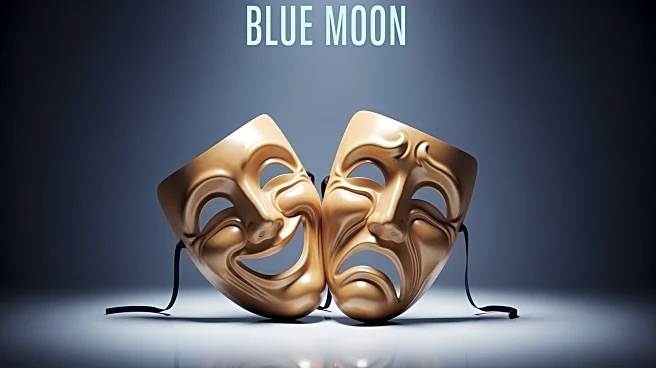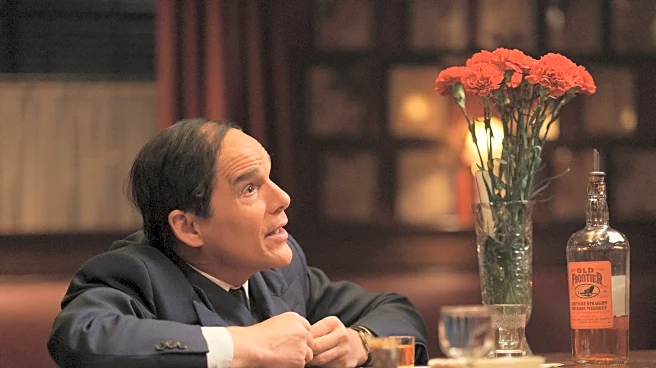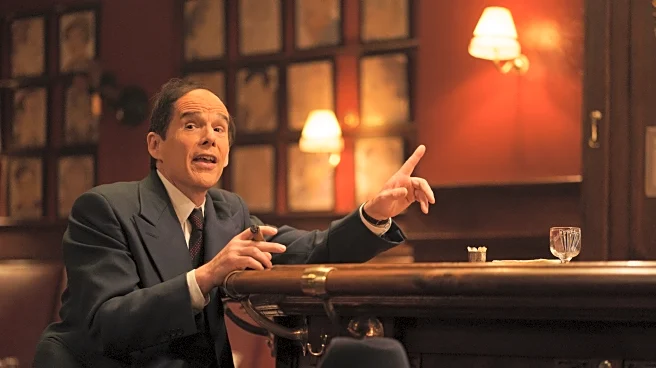What's Happening?
Richard Linklater's film 'Blue Moon' features Ethan Hawke as Lorenz Hart, a lyricist known for his work with Richard Rodgers. The film is set during the opening night of 'Oklahoma!' in 1943, marking a pivotal
moment in Broadway history. Hart, portrayed by Hawke, grapples with the end of his partnership with Rodgers and his unrequited love for Elizabeth, played by Margaret Qualley. The narrative unfolds at Sardi's, a famous Broadway watering hole, where Hart's insecurities and regrets are laid bare. The film combines historical elements with fictionalized accounts, offering a rich portrayal of Hart's internal struggles and the cultural milieu of the time.
Why It's Important?
The film 'Blue Moon' sheds light on the personal and professional challenges faced by Lorenz Hart, a significant figure in American musical theater. By exploring Hart's story, the film highlights the complexities of creative partnerships and the emotional toll of artistic endeavors. This portrayal may resonate with audiences interested in Broadway history and the dynamics of collaboration in the arts. Additionally, the film's release could influence public interest in classic musicals and the legacy of Rodgers and Hart, potentially revitalizing appreciation for their contributions to American culture.
What's Next?
The film's release may spark discussions among theater enthusiasts and historians about the accuracy and artistic interpretation of historical events. It could also lead to renewed interest in the works of Rodgers and Hart, prompting revivals or adaptations of their musicals. As audiences engage with the film, there may be further exploration of the themes of love, loss, and artistic expression depicted in 'Blue Moon.' The film's reception could influence future projects by Linklater and Hawke, encouraging more explorations of historical figures in the arts.
Beyond the Headlines
Beyond its immediate narrative, 'Blue Moon' touches on broader themes of identity and acceptance, particularly in the context of Hart's personal life. The film's depiction of Hart's struggle with societal norms and his own desires offers a poignant reflection on the challenges faced by LGBTQ+ individuals in the mid-20th century. This aspect of the film may contribute to ongoing conversations about representation and inclusivity in media, highlighting the importance of diverse narratives in understanding historical and cultural contexts.












